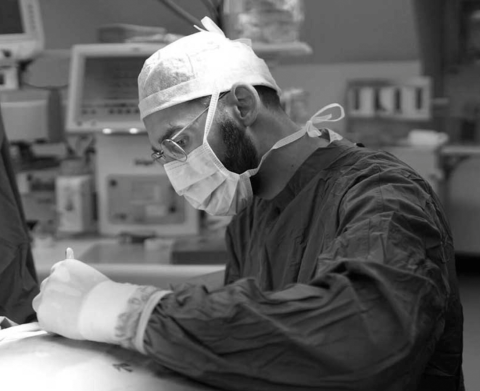
Breast implant removal
Reasons for breast implant removal
Other reasons
Implant complications : Women may develop complications such as leaking implants, ruptures, or capsular contractures after breast augmentation with silicone implants.
Dissatisfaction with appearance : Breast augmentations are often performed abroad for cost reasons. This often results in asymmetries or changes in size. However, this can also occur during the procedure at home.
It is important that breast augmentation is always performed by an experienced plastic surgeon and in a sterile environment.
Lifestyle changes : Over time, you may find that a breast implant limits certain professional or sporting activities. This reduces your quality of life and may lead to a desire for removal.
Health concerns : Some women want to have their breast implants removed due to concerns about health risks, such as the risk of ALCL (anaplastic large cell lymphoma).
Pregnancy : Pregnancy and subsequent breastfeeding can cause changes in the breast. Some women choose to have breasts removed or naturally reconstructed with fat-assisted breast augmentation before starting a family.
Prevention : Many women have an increased risk of breast cancer due to family history. In these cases, prophylactic removal of breast implants may be performed. To maintain the aesthetic appearance, a breast lift or augmentation with autologous fat may be an alternative.
Naturalness : The most common reason for breast implant removal is to return to natural beauty. While, for example, 10 years ago large breasts were still a beauty ideal, the current trend is back towards naturalness. Many women with implants therefore desire firmer, smaller, and natural-looking breasts. Breast augmentation using your own fat can be used to implant a small amount of volume into the breast after removal, thus compensating for any missing volume. This gives women a natural shape, tailored to their individual wishes. If there is excess skin after removal, this can be compensated for with a lift.

Procedure for removing breast implants
Cost: Have breast implants removed
Are there any risks associated with breast implant removal?
Breast implant removal is a low-risk, outpatient procedure. Complications are generally rare. However, to provide you with all the information you need about breast implant removal, we’ve listed the potential risks:
Infection:
Any surgical procedure carries the risk of infection. The area around the surgical site should be carefully cared for and monitored. If you experience any signs of infection, such as severe redness, swelling, or fever, please contact us immediately. Dr. Lutfi will address your concerns promptly.
Bruise and swelling:
Bruises and swelling are normal reactions of the body to the operation, however, in some cases these may
In some cases, this may be excessive. Proper adherence to rest and recovery instructions can help minimize this risk.
Scarring:
Scarring is a natural part of the healing process. However, the location of the incisions and individual healing tendencies can influence the type and extent of scars. To maintain a natural aesthetic, Dr. Lutfi will make every effort to prevent scarring and prescribe appropriate treatments for scar healing.
Loss of sensation:
In some cases, nerves may be affected during surgery, leading to temporary or permanent loss of sensation in the chest. This complication occurs only in very rare cases.
Dissatisfaction with the cosmetic result:
There is a risk that the patient may not be satisfied with the aesthetic outcome of the explantation. This could be due to unexpected changes in breast shape or size. For this reason, it is important to always consult a reputable and qualified specialist.
Asymmetry:
After implant removal, asymmetrical results may occur, which may require further correction. For this reason, you may opt for an additional lift or natural breast augmentation with your own fat with our plastic surgeon.
Changes in breast shape:
Removing the implants can cause changes in breast shape, especially if the skin has been stretched during the time the implants were in place.
Anesthesia risks:
Risks associated with anesthesia, such as allergic reactions or breathing problems, also exist, although they are rare.
Long-term scarring and capsular contracture:
Over time, scars can form that can lead to capsular contractures, resulting in hardening and deformation of the breast implant site.
How long does breast implant removal take?
Is it painful to have breast implants removed?
Will there be scars after breast implant removal?
What does the breast look like after silicone removal?
Specialist in breast implant removal
Breast implant removal Vienna
I look forward to seeing you
Plastic surgery
- Home
- About Me
- Aesthetic surgery
- Aesthetic treatments
- Before After Archive
- Ordination
- For doctors
- Contact
- Cost

